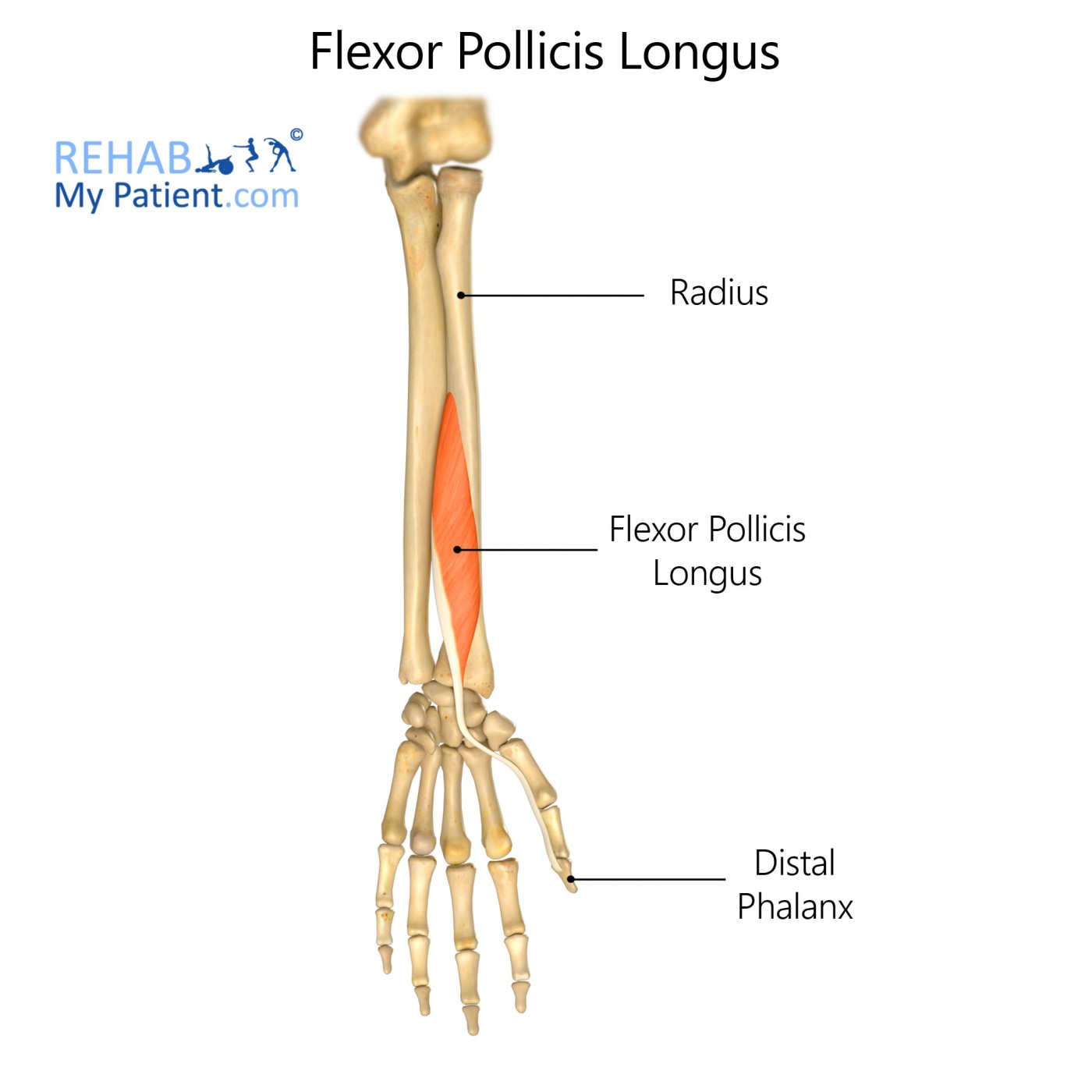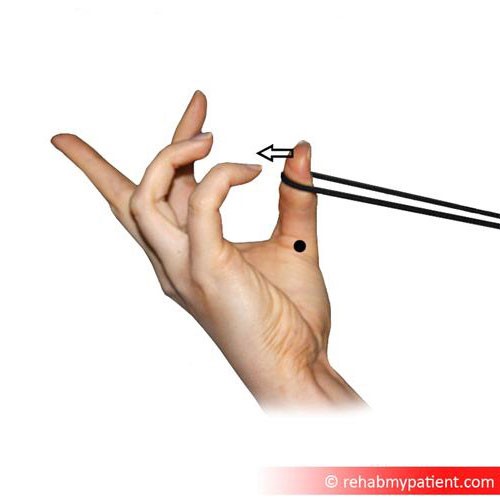Flexor Pollicis Longus
Opublikowano dnia 23rd Jul 2020 / Opublikowano w: Ręka/Palce/Kciuk , Nadgarstek

General information
Flexor pollicis longus is a muscle situated in the deep layer of the anterior compartment of the forearm.
Literal meaning
The long muscle that flexes (bends) the thumb.
Interesting information
This muscle is particularly noteworthy because it is only present and fully developed in human beings. In all other primates, flexor pollicis longus is either found in a rudimentary form or it is absent entirely.
Anatomical variation in the muscle is not uncommon and can include slips of connective tissue running from pronator teres, flexor digitorum superficialis, or flexor digitorum profundus.
Flexor pollicis longus is used for tasks requiring gripping of the hand such as grasping or lifting an object. Any injury to the muscle will cause a decrease in the flexion ability of the thumb which can be a frustrating and debilitating injury. Flexor pollicis longus is susceptible to muscle tears, muscle strain, tendonitis, and rupture. Marked weakness in the thumb, localized pain, or a decrease in the thumb’s range of motion might indicate an injury to flexor pollicis longus.
When the tendon of flexor pollicis longus becomes inflamed it can cause a painful condition known as trigger thumb. Trigger thumb causes the thumb to lock or catch when in the flexed (bent) position. Inflammation can be caused by a number of factors including repetitive use, arthritis, or gout. Noninvasive treatment for trigger thumb includes resting the thumb, applying a splint to immobilize the joint, taking oral anti-inflammatory medication such as ibuprofen, and injecting steroids into the tendon sheath. If these non-invasive methods are unsuccessful the patient may require surgery.
Origin
Radius (anterior surface) and the interosseous membrane.
Insertion
Distal phalanx of the thumb (anterior/palmar side).
Function
Flexes (bends) the thumb and also offers minor assistance in wrist flexion.
Nerve supply
Median nerve (C7, C8)
Blood supply
Anterior interosseous artery

Relevant research
Volar plating following a distal radius fracture is known to often cause post-operative extensor tendon rupture. Flexor tendon rupture on the other hand, is less common and is often due to incorrect placement of the volar plate, steroid use by the patient, or a number of other factors. This study suggests that if significant tendon irritation is experienced after placement of volar plating, the plating should be removed immediately after bony union has been restored.
Cho CH, Lee KJ, Song KS, Bae KC. (2012). “Delayed rupture of flexor pollicis longus after volar plating for a distal radius fracture”. Clin Orthop Surg. 4(4):325-8.
Following the surgical repair of flexor pollicis longus, great care must be taken to avoid tendon rupture. This case study demonstrates that use of electronic muscle stimulators following flexor pollicis longus repair may lead to rupture. Therefore, use of these devices should be avoided until healing is complete and patients (particularly bodybuilders) should be made aware of the risks.
Ansari A, Ramsey KW, Floyd DC. (2006). “Rupture of a flexor pollicis longus repair in a body builder through the use of an electronic muscle stimulator”. Br J Sports Med. 40(12).
Flexor pollicis longus exercises

To strengthen and hone the function of flexor pollicis longus, sit in a comfortable chair with your hand and palm facing you. Place a band around your thumb, and then move your thumb towards your little finger. Then touch your thumb to each of your fingers in turn while focusing on the flexion of your thumb. Between each finger touch you should extend your fingers and thumb fully. Repeat this ten times then switch to your other hand.
Zapisać się
Zarejestruj się już teraz, aby skorzystać z bezpłatnego okresu próbnego!
Zacznij korzystać z Rehab My Patient już dziś i zrewolucjonizuj proces przepisywania ćwiczeń, aby zapewnić sobie skuteczną rehabilitację.
Rozpocznij 14-dniowy bezpłatny okres próbny